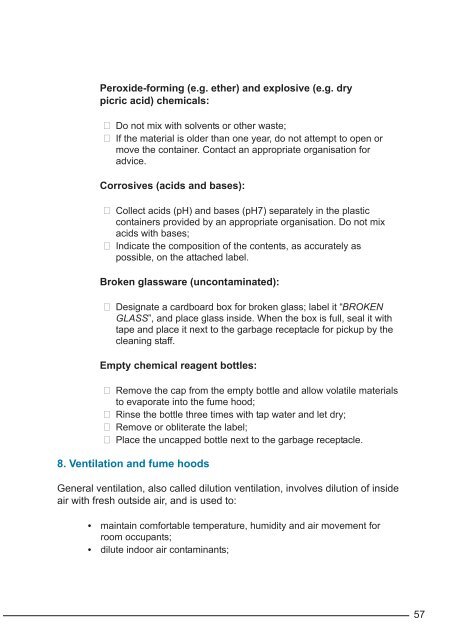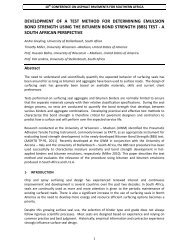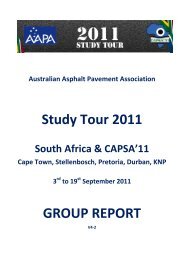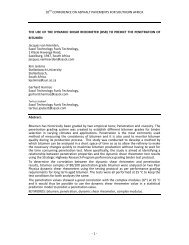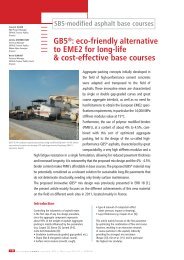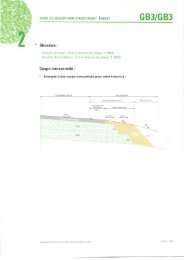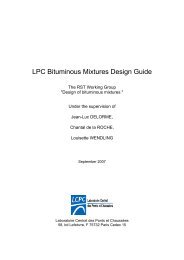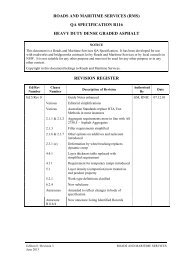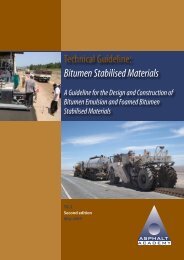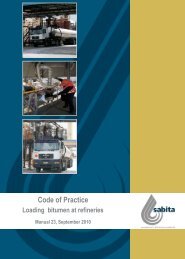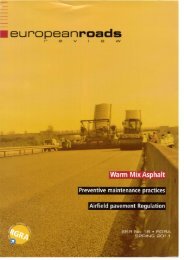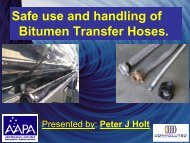Guide to the safe handling of solvents in a bituminous ... - Aapaq.org
Guide to the safe handling of solvents in a bituminous ... - Aapaq.org
Guide to the safe handling of solvents in a bituminous ... - Aapaq.org
- No tags were found...
Create successful ePaper yourself
Turn your PDF publications into a flip-book with our unique Google optimized e-Paper software.
Peroxide-form<strong>in</strong>g (e.g. e<strong>the</strong>r) and explosive (e.g. drypicric acid) chemicals: Do not mix with <strong>solvents</strong> or o<strong>the</strong>r waste; If <strong>the</strong> material is older than one year, do not attempt <strong>to</strong> open ormove <strong>the</strong> conta<strong>in</strong>er. Contact an appropriate <strong>org</strong>anisation foradvice.Corrosives (acids and bases): Collect acids (pH) and bases (pH7) separately <strong>in</strong> <strong>the</strong> plasticconta<strong>in</strong>ers provided by an appropriate <strong>org</strong>anisation. Do not mixacids with bases; Indicate <strong>the</strong> composition <strong>of</strong> <strong>the</strong> contents, as accurately aspossible, on <strong>the</strong> attached label.Broken glassware (uncontam<strong>in</strong>ated): Designate a cardboard box for broken glass; label it “BROKENGLASS”, and place glass <strong>in</strong>side. When <strong>the</strong> box is full, seal it withtape and place it next <strong>to</strong> <strong>the</strong> garbage receptacle for pickup by <strong>the</strong>clean<strong>in</strong>g staff.Empty chemical reagent bottles: Remove <strong>the</strong> cap from <strong>the</strong> empty bottle and allow volatile materials<strong>to</strong> evaporate <strong>in</strong><strong>to</strong> <strong>the</strong> fume hood; R<strong>in</strong>se <strong>the</strong> bottle three times with tap water and let dry; Remove or obliterate <strong>the</strong> label; Place <strong>the</strong> uncapped bottle next <strong>to</strong> <strong>the</strong> garbage receptacle.8. Ventilation and fume hoodsGeneral ventilation, also called dilution ventilation, <strong>in</strong>volves dilution <strong>of</strong> <strong>in</strong>sideair with fresh outside air, and is used <strong>to</strong>:• ma<strong>in</strong>ta<strong>in</strong> comfortable temperature, humidity and air movement forroom occupants;• dilute <strong>in</strong>door air contam<strong>in</strong>ants;57


